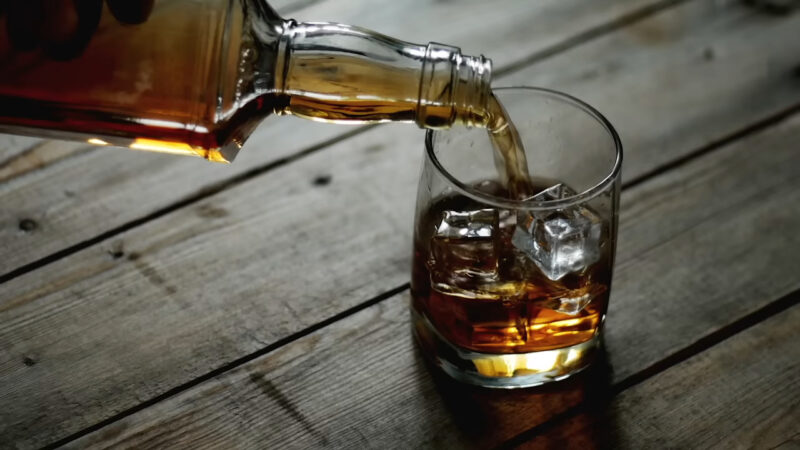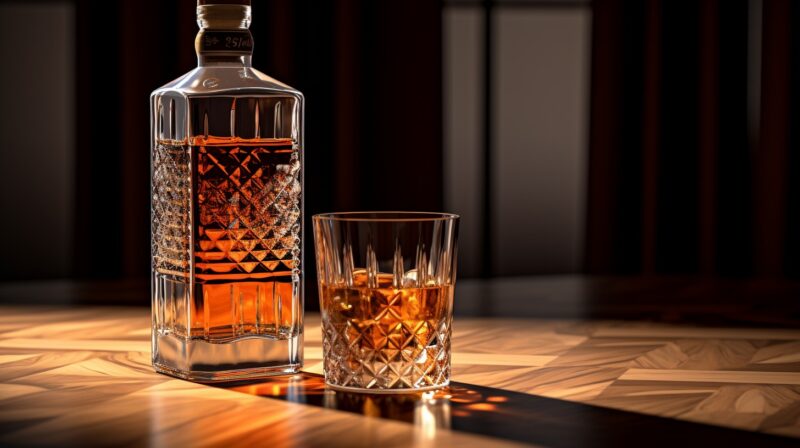When you think of Kentucky bourbon, you might think of folks wearing seersucker blazers sipping the spirit on the rocks, and less about how the drink is actually made. But those green, rolling hills and little country creeks and streams have a lot to do with that bottle of booze on your bar cart.
The truth is, great bourbon wouldn’t exist without clean, Kentucky water. Like many spirits, Bourbon has an acquired taste, just as each person has a palate preference. In general, bourbon can range from having notes of vanilla to a smoky oak taste, to even caramel.
Saying something has notes of anything makes it sound fancy, but for me–a Southerner–I think a good bourbon can taste a little bit like a fresh-baked pan of cornbread. But it’s not just a Southern staple anymore. Bourbon has quickly become one of America’s most popular whiskeys.
Now, technically, it can be produced anywhere in the US, but the majority comes from Kentucky. And, in fact, there’s an estimated six million barrels of bourbon aging in Kentucky right now–which they say is more than the entire population of the state, including all those Kentucky horses.
Key Takeaways:
- The significant role of Kentucky’s landscape, particularly its water, in the production of bourbon. The green hills, creeks, and streams of Kentucky contribute to the quality and uniqueness of the bourbon produced there.
- Bourbon is noted for its diverse flavor notes, ranging from vanilla and smoky oak to caramel.
- A critical ingredient in bourbon production is Kentucky’s limestone-filtered water.
How it’s Made
Like many other whiskeys, bourbon distillers follow a strict set of guidelines when making it. The four common steps are:
- Each distillery has its own mash bill for their whiskey. Think of a mash bill like a recipe that consists of various grains, like corn or barley. This combination of ingredients dictates what type of whiskey they’re making. The mash bill is then combined with water.
- After the mash bill has soaked, heated and dried, yeast is then added to the mix, kicking off fermentation. At the end of this, you basically have beer.
- This beer-like liquid (that even smells like beer) is then boiled in large stills to separate the water, yeast and residue from the new whiskey, beginning the distillation process.
- Next up is barreling. The brand-new whiskey is placed into large wooden barrels, at a specific proof, and sometimes even temperature, to age and mature. The whiskey gets its coloring and develops a lot of its flavor from this step, and that flavor is very dependent on which wood the barrels are made of.
- Each whiskey has a different set of guidelines that distillers must follow to be classified as a certain type. For a whiskey to be called bourbon, the mash bill must be made with a minimum of 51% corn, the whiskey must be barreled at no more than 125 proof in new charred oak barrels, and bottled at no less than 80 proof. But how does Kentucky water play a part in all of this?
Kentucky Bourbon Trail
I recently paid a visit to the Kentucky Bourbon Trail. If you’ve never been, it’s a program sponsored by the Kentucky Distillers’ Association to promote bourbon whiskey, by offering tasting tours and special events at popular, well-known distilleries.
Among them are Angel’s Envy, Bulliet Frontier, Four Roses, Maker’s Mark, and Woodford Reserve, to name a few–and some folks have even dubbed this trail the bourbon lover’s Holy Grail. So, while I imagined I’d simply be sipping spirits while wandering around and enjoying the scenery, I actually began to notice how important water is to each distillery.
All of which have a preferred water source, and it plays a vital role in the production, and the taste, of the bourbon.
Sustainability

While every step is important to the whiskey making process, many distillers believe that water is the most valuable element. And it just so happens that Kentucky has a secret ingredient in their water: limestone. In fact, the sedimentary rock makes up much of the geology in the state, with more than 50% of the surface rocks and lake beds composed of it.
When water passes along limestone, it naturally filters out iron and adds nutrients like magnesium and calcium, making it a sweet-tasting mineral water. So when distilleries add this naturally limestone-filtered water to their mash bill, and the fermentation process begins, the yeast thrives on those nutrients, making for a tastier bourbon.
One well-known distiller, Maker’s Mark, has gone so far as to hire an environmental specialist to lead the efforts of land preservation and water conservation around their long-time distillery. “Our land management really sets the bar for us,” said Jason Nally, Environmental Champion for Maker’s Mark. “
The distillery features a designated water sanctuary that’s committed to improved plant diversity, preventing erosion, increasing groundwater infiltration and providing wildlife habitat. By focusing on the wood, the water, and the wheat, we can control the quality of the waterway that is the very source for our spirit.”
This effort to be environmentally conscious has become a priority for many bourbon distillers. Jim Bean received a LEED Gold certification in 2013 for changes they have made within their stillhouses.
Woodford Reserve, Heaven Hill and Wilderness Trail are also making changes to protect their water sources, purchase local products and reduce their carbon footprint.
FAQs
Is Jack Daniel’s technically bourbon?
No, Jack Daniel’s is not classified as bourbon but as Tennessee whiskey. While it meets the basic criteria to be considered bourbon, it undergoes an additional step known as the Lincoln County Process, where the whiskey is filtered through charcoal before aging, which is distinctive to Tennessee whiskey.
Why is bourbon called bourbon?
The name “bourbon” originates from Bourbon County, Kentucky, where it was originally produced. The name reflects its geographic roots, although today, bourbon can be produced anywhere in the United States, not just Kentucky.
What makes bourbon different than whiskey?
Other whiskeys have different production processes and ingredient compositions than bourbon.
Is Jameson a bourbon?
No, Jameson is not a bourbon; it is an Irish whiskey. Irish whiskey is made in Ireland and typically triple-distilled from a mix of malted and unmalted barley, aged in wooden casks for at least three years. This process gives it a different flavor profile and characteristics compared to bourbon.
Closing Thoughts
It’s the commitment to time-honored methods like the use of new, charred oak barrels and the strict adherence to a corn-dominant mash bill. This dedication creates a distinct flavor profile that’s uniquely American.
The passion and history embedded in bourbon production, from the selection of grains to the aging process, culminates in a spirit that’s more than just a drink — it’s a cultural emblem.
Don’t miss out on more alchocolic secrets be sure to visit knowhowstudios.com.
